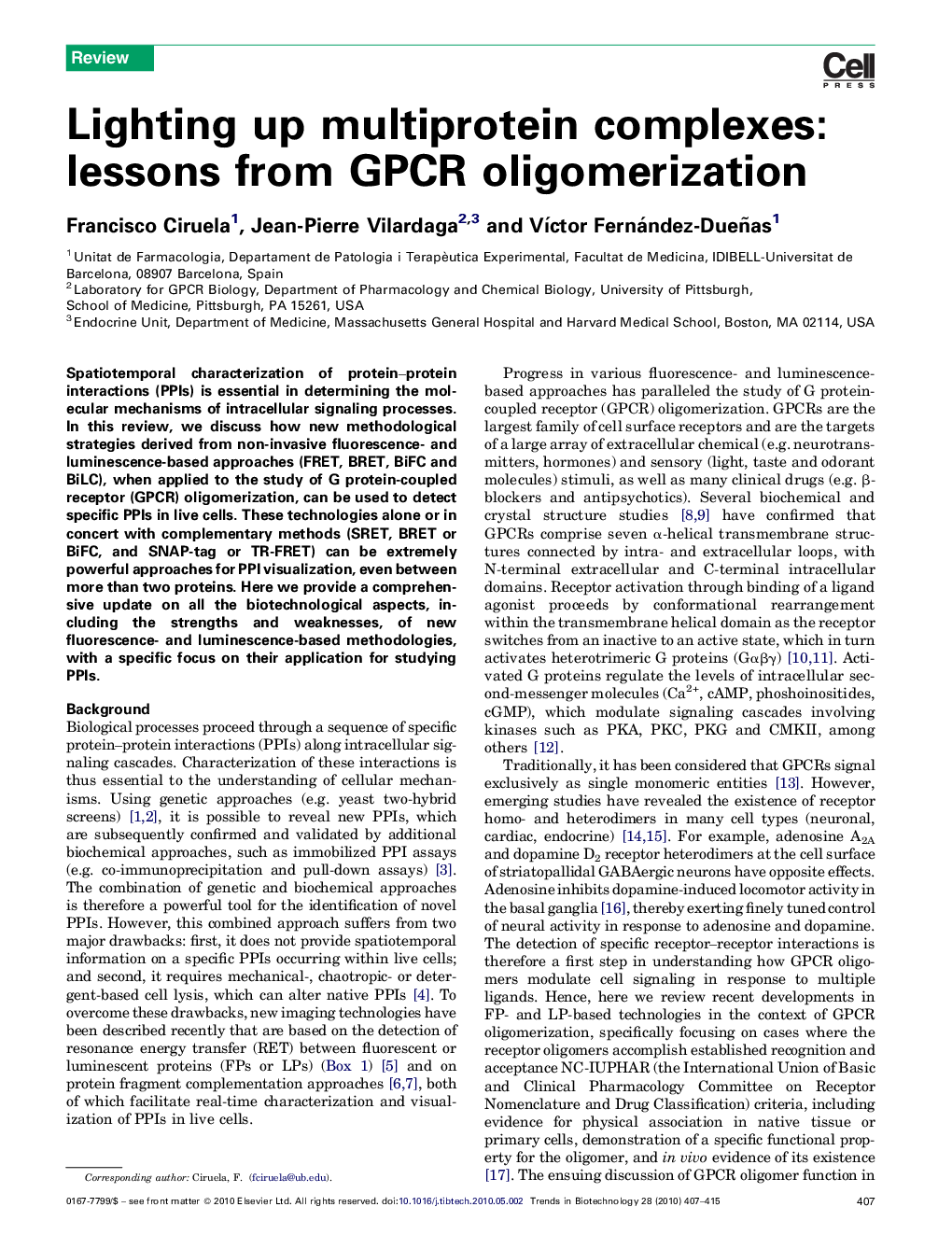| Article ID | Journal | Published Year | Pages | File Type |
|---|---|---|---|---|
| 37536 | Trends in Biotechnology | 2010 | 9 Pages |
Spatiotemporal characterization of protein–protein interactions (PPIs) is essential in determining the molecular mechanisms of intracellular signaling processes. In this review, we discuss how new methodological strategies derived from non-invasive fluorescence- and luminescence-based approaches (FRET, BRET, BiFC and BiLC), when applied to the study of G protein-coupled receptor (GPCR) oligomerization, can be used to detect specific PPIs in live cells. These technologies alone or in concert with complementary methods (SRET, BRET or BiFC, and SNAP-tag or TR-FRET) can be extremely powerful approaches for PPI visualization, even between more than two proteins. Here we provide a comprehensive update on all the biotechnological aspects, including the strengths and weaknesses, of new fluorescence- and luminescence-based methodologies, with a specific focus on their application for studying PPIs.
